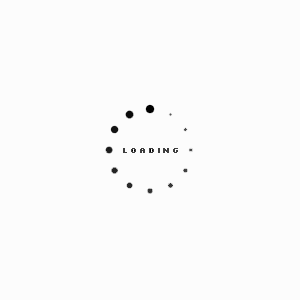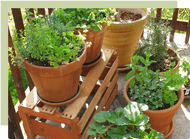Posted by Kelly Jean Reyland
14th Aug 2023
A guide to container gardening

Whether by necessity or for looks, container gardening has been around since people started living in cities. The container itself is really limited only by your imagination and drainage holes!
You can choose from ceramic, metal, terracotta, plastic or even glass. The rule of thumb to follow for successful container gardening is choose the plant and get a suitable sized pot for it to grow into or choose a suitable sized plant to grow into the pot that you already have. Issues tend to occur when the pot is the right size for the plant right now but there is no room for the plant to grow.
 Small pots dry out very quickly and root bound plants (the roots have no space to grow so they grow round in circles, filling the pot) in small pots even more so. So please ensure that there is room for the plant to grow into the pot or be prepared to repot into the next size of pot each year or so. Some plants can even break the pot if they get too full of roots.
Small pots dry out very quickly and root bound plants (the roots have no space to grow so they grow round in circles, filling the pot) in small pots even more so. So please ensure that there is room for the plant to grow into the pot or be prepared to repot into the next size of pot each year or so. Some plants can even break the pot if they get too full of roots.
There are plenty of options to plant in the pot – if you have a position in mind for your pots, select plants that thrive in those conditions. Is it full shade – part shade – full sun? Also choose plants that need similar living conditions and water requirements so they can live happily together in the same pot.
Do you want the planting to be permanent or is this a container that you want to change each season? If it is permanent – do you want it to be evergreen or deciduous (sheds its leaves in autumn)? Evergreen plants will shed a few leaves regularly but will look the same year-round. Deciduous plants shed all their leaves over the space of a week or so but there is generally the bonus of seasonal interest in the way of foliage changing colour in autumn and potentially spring blossom.
A word on potting mix. You get what you pay for. If you are planting trees or shrubs that are going to be in the pots for years, I highly recommend that you invest in a premium potting mix. They have all the additions such as wetting crystals and coir fibre that help a plant thrive long term. The slow-release fertiliser will run out, generally in 9 months to 1 year. After that you are responsible for feeding your plants.
If you are planting containers that will be changed every season, you have the opportunity to refresh and add new potting mix. In this situation you can use a middle range potting mix where the fertiliser won’t last as long. The cheapest bags will have little to no slow-release fertiliser and no extras. If your potted plants aren’t thriving it could be they are planted into cheap potting mix.
Compost or garden soil shouldn’t be used in pots in place of potting mix. Compost is too rich and is still breaking down so it can get quite warm in the process and shrinks down quite a lot. Soil is full of living organisms that need access to the other living organisms around them so when we contain them in a pot and cut off access, they die off and the soil structure becomes very compacted.

Feeding and watering your potted plants is vital if you want a good display and healthy plants. As mentioned in the word about potting mix, the slow-release fertiliser will only last for so long, anywhere from 3 months to 1 year. After that time, there are nutrients in the mix to feed the plant. So ensure that you put a reminder on your calendar to top up slow-release fertiliser and during the warmer months, top up with a liquid fertiliser to give them a boost. Liquid seaweed and kelp pellets are a great health tonic, but they don’t replace fertiliser. Granular fertiliser from Tui or Yates are too strong for use in pots and will state on the packet if they are not recommended for use in pots. If you have dogs, avoid using blood and bone or dried blood in your pots as you may come home to find the plants pulled out of the pot and potting mix everywhere.
Watering is particularly important in pots as the roots are contained and can’t go searching deeper for water. Pots are generally free draining unless the pot has a saucer under it. With a saucer in place, they can stay quite damp so consider what you are planting into them. When planting larger shrubs or trees, you can mix up to one quarter of compost into the potting mix as this will help retain more water. This will help prevent stress during the warmer months. It’s not uncommon to need to water larger potted plants twice in the hottest summer months.
Potted plants don’t tend to need much watering over the cooler months as they don’t physically require as much water and rain will generally provide ample moisture. Keep an eye on the pots though as you can get areas that are sheltered from rainfall by buildings or other plants, and these will need hand watered when necessary. Make sure you turn off any automated irrigation systems.
As with any potted plants, the general rule of thumb is to water deeply, less often rather than a light sprinkle every day. Plants should be allowed to dry out (just not completely!) before watering again. It’s best to water in the morning and if possible, only water the soil rather than over the foliage to help prevent fungal disease.
If you have drippers or sprinklers set up in your pots, it’s best if these are used in the morning so the plant has the moisture available during the heat of the day. But again, you need to keep an eye on your pots – especially if it is on an electronic timer- because it will water them on schedule regardless of whether they need it or not.
After your pots have been planted for several months, it pays to take notice if the water you apply is running straight out the bottom of the pot. Or after you finish watering, when you scratch below the surface of the potting mix, it is still dry. Potting mix can become hydrophobic where it repels water. It also happens to soil in garden areas where it doesn’t get rainfall such as under house eaves. In this situation you need to apply a soil ‘re-wetter’ that will remedy the issue and get the mix absorbing water again. Saturaid and Yates ‘Concentrated soil wetter’ will both sort this issue out.

Container gardening is hugely rewarding, particularly when you don’t have a lot of garden space or a big section. Many plants can be grown very successfully in a container. The key to beautiful thriving pots is to put some thought into what you’re going to plant beforehand, get the right stuff for planting them and keep a regular eye on them once they’re planted! You can enjoy a garden wherever you live, and you can take it with you if you leave. That’s a big bonus!
By Kelly Jean Reyland of Garden Advice NZ (www.gardenadvice.co.nz)
Images:
"Container garden" by Richard Masoner / Cyclelicious is licensed under CC BY-SA 2.0.
"container garden on the patio" by thomas pix is licensed under CC BY 2.0.


























